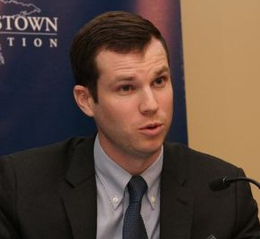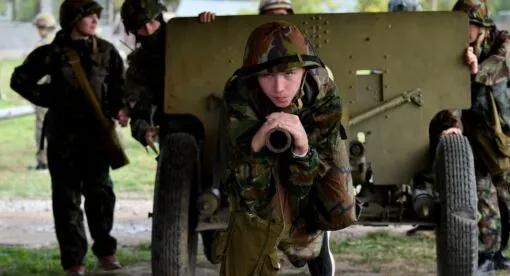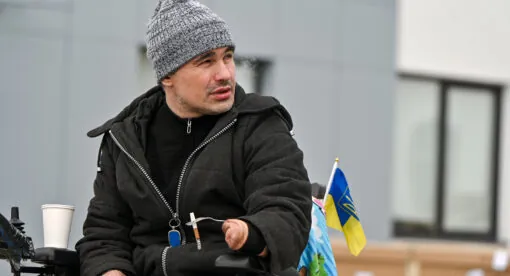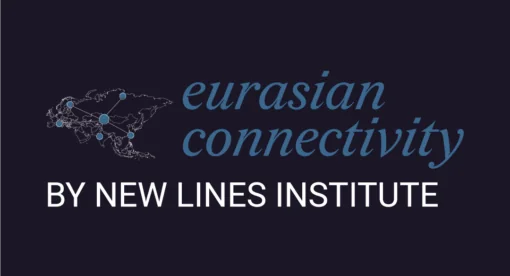Editor’s Note: This Terrain Analysis is part five of “ISIS 2020” – a series of briefings about the current status of the Islamic State by authors from different parts of the region. It is published by the Newlines Institute’s Nonstate Actors program. Parts one, two three, and four were released on April 28, May 5, May 12, and May 19 respectively.
In 2018, when the Islamic State began losing its “territorial caliphate” in Iraq and Syria, ISIS’s leadership knew that the organization would have to depend on external “provinces” (called wilayat) to keep its global project thriving. The provinces would launch attacks and remain loyal to ISIS, and ISIS could claim that that the “caliphate” might no longer be expanding, but it was remaining. With setbacks in Afghanistan and the Philippines, Africa emerged as the only continent where ISIS could operate like it did in Syria and Iraq during its heyday. So long as ISIS thrives in Africa, the dream of the global caliphate remains alive.
Not only can ISIS conduct sophisticated attacks in Africa, it also can occupy territories and overpower armies. Moreover, with rapidly increasing populations, historical narratives about reviving pre-colonial Islamic states, and challenges resulting from weak governance and security forces’ abuses, ISIS finds fertile ground on the continent. While foreign policy often focuses on geopolitical competition in Africa, especially between the United States and China, the emergence of the Islamic State as a power player on the continent – on top of al Qaeda’s presence there since as early as Osama bin Laden’s 1990s stay in Sudan – means the Islamic State will be a force that governments, armies, aid organizations, multinational corporations, and, of course, civilians will inevitably have to confront.
The Islamic State’s Provinces in Africa

In Africa, ISIS’s three most significant provinces are the Islamic State West Africa Province (ISWAP) in Nigeria, Niger, Chad, Cameroon, Burkina Faso, and Mali; Islamic State Central Africa Province (ISCAP) in Democratic Republic of Congo and Mozambique; and Islamic State Sinai Province in Egypt. There was also an Islamic State Algeria Province comprising al Qaeda in the Islamic Maghreb (AQIM) defectors. However, it is now mostly defunct, and its last attack in southern Algeria near Mali’s border in 2019 was commanded by formerly Sahel-based ISWAP fighters.
In addition, there is an Islamic State Somalia Province. However, like the Khorasan Province (Afghanistan) and Yemen Province, which clash with the Taliban and al Qaeda in the Arabian Peninsula, respectively, as well as regional and international forces, ISIS’s Somali fighters are weaker than their al Qaeda rivals in al Shabaab. Furthermore, they are targeted by U.S. airstrikes and Somali national and East African regional forces. Like other ISIS provinces, the Somalia Province also alleges that al Qaeda, or specifically al-Shabaab, betrays “the mujahidin,” kills ISIS members, and sullies their reputations.
ISIS also has claimed multiple attacks in Tunisia. However, ISIS’s failure to capture Tunisian territory near the Libyan border in 2016 led ISIS to deny its Tunisian network province status. In contrast, ISIS’s fighters in Somalia and the Philippines captured towns in 2016 and 2017, respectively, and earned province status.
Further, there were three ISIS provinces in Libya, but they became largely defunct after ISIS lost territory there in 2016. This was despite ISIS’s provinces in Libya having resembled ISIS in Syria and Iraq by establishing governance structures and receiving delegations from Syria and Iraq. Such delegations included the women’s al Khansaa brigade and Katibat al-Battar al-Libi, which launched external operations in Tunisia in 2015 and Manchester, England, in 2018, and liaised with Nigeria- and Mali-based jihadists before pledging loyalty to ISIS leader Abu Bakr al-Baghdadi and becoming ISWAP. Only renewed internationalization and exacerbation of Libya’s civil conflict might enable ISIS’s revival in the country, similar to the political developments in Syria and Iraq that preceded ISIS’s “comeback” there starting in October 2019.
Thus, in Africa, like elsewhere in the world, including Syria and Iraq, ISIS provinces and fighters are present, resilient, and releasing propaganda videos through ISIS’s centralized media apparatus. However, in many African locations, ISIS faces pressure.
Only three standout provinces in Africa – ISWAP, ISCAP, and Sinai Province – are in their own league when it comes to ISIS’s external provinces. ISIS Sinai Province conducted more attacks in 2019 than either ISWAP or ISCAP and wage guerrilla warfare in the Sinai. However, this Terrain Analysis focuses on ISWAP and ISCAP because they have greater “breakout capacity” and potential to conquer territory resembling what ISIS achieved in Syria and Iraq. ISIS Sinai Province, in contrast, is “boxed in” amid Egyptian – and clandestinely Israeli – aerial and ground operations, despite its causing significant harm in Sinai and Lower Egypt.
Islamic State’s Expansion in Sub-Saharan Africa: ISWAP and ISCAP
How ‘Boko Haram’ became ISWAP

ISWAP formed in March 2015 when its predecessor, Boko Haram, pledged loyalty to ISIS. Boko Haram (“Western education is sinful” ) was also known by its official Arabic name, Jamaatu Ahlis Sunna Liddaawati Wal-Jihad (“[Salafi] Muslim Group for Preaching and Jihad”). The group’s leader since declaring jihad in Nigeria in 2010 – and thus ISWAP’s first leader – was the notoriously egomaniacal Abubakar Shekau. However, his counter-productive strategy of targeting Muslims and killing subcommanders alienated him from al Qaeda in the Islamic Maghreb (AQIM), which had initially welcomed Boko Haram into al Qaeda’s fold by releasing Shekau’s first ever written statement and training his fighters in Mali in 2010.
So power-hungry was Shekau that although he believed al-Baghdadi was a legitimate caliph by 2015, he resisted subordinating himself and pledging loyalty to al-Baghdadi until his sub-commanders threatened to pledge without him. Shekau feared his group would split like in 2012 when AQIM-trained fighters formed the anti-Shekau faction called Ansarul Muslimina Fi Biladis Sudan (Ansaru). Thus, Shekau finally pledged loyalty to al-Baghdadi.
Despite Shekau’s pledge and ISWAP members’ training with ISIS in Libya, ISWAP was stymied by a multinational military force comprising Nigeria, Niger, Chad, and Cameroon in 2015-2016. These countries reclaimed territories the size of Maryland that the group conquered in northeastern Nigeria in 2013-2014 and Shekau had declared as an “Islamic state.” Thus, although ISIS featured Shekau’s pledge in 11 congratulatory videos and released multiple ISWAP battle videos in 2015, ISWAP was not initially ISIS’s showcase external province. ISIS furthermore did not need to highlight the West African Province in 2015 because it was conquering territory in higher profile theaters like Syria, Iraq, and Libya and launching unprecedentedly large-scale attacks against the West, including in Paris and Brussels.
Reshaping ISWAP Leadership After the ‘Caliphate’
ISIS intervened in ISWAP’s leadership when the sub-commanders who once threatened to pledge loyalty to al-Baghdadi without Shekau, including the group’s main liaison to ISIS, Abu Musab al-Barnawi, cut off Shekau’s communications to ISIS. Al-Barnawi then lobbied ISIS to remove Shekau because of his extremism. ISIS finally announced al-Barnawi as ISWAP’s new leader in August 2016. Al-Barnawi’s father, Muhammed Yusuf, had also led the group until Nigerian security forces killed him in 2009 and Shekau, Yusuf’s deputy, succeeded him.
Without retracting loyalty to al-Baghdadi or abandoning producing ISIS-style nasheeds (vocal music that is either sung a cappella or accompanied by the use of percussion instruments) and videos, Shekau and his loyalists revived Boko Haram in August 2016, but it was weaker than the al-Barnawi-led ISWAP. Unlike Shekau, al-Barnawi treated civilians leniently. His leadership also coincided with reductions in ISWAP attacks and the prioritization of building ISWAP-controlled areas economically. Al-Barnawi’s basing around Lake Chad also facilitated the West African Province’s first military barracks raids in Niger. Chad and Cameroon were also struck by ISWAP’s retaliatory attacks during their military interventions into Nigerian territory in 2015.
Although al-Barnawi recognized the ISIS caliphate’s legitimacy, his writings explicitly and interviews implicitly indicated his favorable views of al Qaeda, including Ansaru and AQIM, whose leader praised Muhammed Yusuf’s martyrdom and promised to support the jihad in Nigeria after Yusuf’s death. Therefore, once ISIS began losing its “territorial caliphate,” al-Baghdadi ordered the execution of al-Barnawi’s “advisor” and late father’s third-in-command, Mamman Nur.
Nur maintained contacts with Sudan-based al Qaeda supporters and engaged in secret truce negotiations with Nigeria under the auspices of separate negotiations whereby ISWAP released 105 Muslim schoolgirls kidnapped from a school in February 2018. ISIS ordered ISWAP to return them because they never actively fought ISWAP. Only the lone Christian schoolgirl was, like the Christian Chibok schoolgirls, allowed by ISIS to remain ISWAP’s “slave” even though ISIS only imposed jizya (a tax levied on non-Muslim citizens by medieval Islamic polities) on Christians and “enslaved” Yazidis in Syria and Iraq.
With Nur eliminated by September 2018, ISWAP placed al-Barnawi under house arrest. ISIS then ordered ISWAP’s execution of two young Muslim female aid workers who “actively fought” ISWAP by working in military-protected zones, which would have been uncharacteristic of Nur and al-Barnawi. This, however, demonstrated ISIS’s steering ISWAP in a more hardline direction while ISIS was reorganizing its global structure, including announcing its Somalia and East Asia provinces in August and September 2018.
Later, in March 2019, al-Barnawi was removed from ISWAP leadership and reportedly killed in ISWAP infighting. While al-Barnawi and Nur may never have switched loyalty to al Qaeda, ISIS ensured that leaders more committed to the Islamic State led ISWAP from 2018 onward. Moreover, once al-Barnawi and Nur were purged, ISWAP attacks on Nigeria’s military increased, including raids commanded by ISWAP members who formerly trained with ISIS in Libya.
ISWAP finally captured the multinational military base on Nigeria’s side of Lake Chad in December 2018 and reached a level of strength unseen since its conquests five years earlier. ISIS, in turn, promoted ISWAP more than any other external province in 2019. This included ISWAP’s dramatic Christmas Day executions of 10 Christians and one Muslim wearing Guantanamo-style prison uniforms to avenge al-Baghdadi’s death two months earlier. ISIS, therefore, empowered ISWAP, retained the province leaders’ unswerving loyalty, and leveraged ISWAP’s successes to offset the Islamic State’s struggles in Syria and Iraq.
ISWAP’s Sahel Component

By June 2019, ISWAP was becoming ISIS’s strongest external province. Thus, when ISIS commenced a 14-video global media campaign to reaffirm loyalty to al-Baghdadi that month, ISWAP’s video came first. It featured a classical Arabic-speaking ISWAP commander describing ISWAP’s conquests in Nigeria, Niger, Chad, and Cameroon. However, his speech was followed by the West African Province’s Sahel-based fighters pledging loyalty to al-Baghdadi.
Three months earlier, and coinciding with ISIS’s loss of Baghouz, Syria, ISIS had re-announced Western Saharan jihadist Adnan Abu Walid al-Sahrawi’s loyalty pledge to al-Baghdadi for the first time since 2016, and in al-Baghdadi’s last ever video – in April 2019 – he uniquely praised al-Sahrawi. ISIS also confirmed in March 2019 that al-Sahrawi’s Sahel-based fighters in Mali, Niger, and Burkina Faso were incorporated into ISWAP. Concurrently, al-Barnawi was suspected of contacting members of al Qaeda’s Sahel-based affiliate, Jamaat Nusrat al-Islam wal-Muslimin (“Group of Supporters of Islam and Muslims,” or JNIM). This suggests why ISWAP executed members who communicated with the al Qaeda affiliate and why al-Barnawi was overthrown from ISWAP leadership days before ISWAP incorporated al-Sahrawi’s fighters, who were known as Islamic State in Greater Sahara (ISGS) and were JNIM’s rivals.
JNIM and ISGS succeeded the al Qaeda-loyal Movement for Unity [Monotheism] and Jihad in West Africa (MUJWA), whose Sahelian commanders split from Algeria-centric AQIM in 2011. MUJWA imposed strict sharia punishments in northern Mali in 2012 after the Malian state collapsed. However, after a French-led military intervention ejected MUJWA from northern Mali, al-Sahrawi pledged loyalty to ISIS in 2015. ISIS finally acknowledged his pledge one year later when his fighters launched a spree of attacks in Burkina Faso.
Sahel-based jihadists who remained loyal to al Qaeda, however, formed JNIM in 2017. JNIM maintained loyalty to al Qaeda and the Taliban and followed AQIM leader Droukdel’s advice regarding incrementally imposing sharia on religiously “immature” civilians, unlike ISGS or the defunct MUJWA. Similar to the Taliban, the al Qaeda affiliate began advocating negotiations with Mali in 2019, albeit on condition that France (not the United States, as in Afghanistan) halt Sahel-based counterterrorism operations.
JNIM was initially stronger than ISGS, but in late 2018 ISGS, like ISWAP, began acculturating to ISIS by releasing brutal videos, including executing “Snitches of the Sahwa (anti-ISIS Sunni collaborators).” After ISWAP incorporated ISGS in March 2019, ISGS also began targeting civilians, including Burkinabe Christians in churches. This resembled ISWAP because it, too, specifically began targeting Christians and churches only in March 2019 and displayed them and captured Nigerian soldiers in Guantanamo-style prison uniforms and executed them in brutal ISIS fashion. ISWAP’s Lake Chad- and Sahel-based components, therefore, assimilated to the style of their fellow jihadists in Syria and Iraq and genuinely became “ISIS,” despite the distance between West Africa and the Middle East and limited physical contacts between them.

Synergies between ISWAP and ISCAP in DRC and Mozambique
While March-April 2019 represented a turning point for ISWAP’s Lake Chad- and Sahel-based components, that period also coincided with ISIS’s announcing ISCAP’s formation. Like the West African province, the Central African Province has two discontinuous components, including in the eastern part of the Democratic Republic of the Congo, or DRC, and northern Mozambique. The former operates near Uganda’s border and includes remnants of anti-Ugandan government Muslim militants led by Saudi-educated and Tablighi Jamaat-influenced Ugandan convert to Islam, Jamil Mukulu, who currently awaits an International Criminal Court trial in Tanzania. Although ISCAP’s DRC-based fighters are less active than their Mozambican counterparts, they have still conducted dozens of attacks on security forces, seized spoils, and received funding, media support, and, like ISWAP, Islamic texts from ISIS’s al Himmah Library.
ISCAP’s Mozambican component ideologically descends from Mozambican Islamic University in Medina (IUM) graduates who introduced Salafism into Mozambique. However, the ideologues who became ISCAP broke from those Salafists, vehemently opposed secularism, and were ejected from their mosques in 2010 by Mozambique’s government with mainstream Salafist backing. This mirrors Muhammed Yusuf, whose teacher was an IUM graduate in Nigeria’s largest Salafist movement. However, Yusuf broke from that teacher and mainstream Nigerian Salafists after 9/11 because Yusuf considered them to be hypocrites for abandoning both the imposition of strict sharia and support for al Qaeda’s jihad. Yusuf’s death, likewise, resulted from a Salafist-backed Nigerian government crackdown on his movement that was larger than a previous crackdown on his followers, then known as Nigeria’s “Taliban,” in 2003.
ISCAP’s Mozambican jihadists since 2010 have called themselves al Shabaab (“The Youths”). However, they are distinct from Somalia’s al Shabaab or the “Salafi Youth” (al-Shabaab al-Salafiya) group within Nigeria’s Salafist movement that Yusuf once led. Between 2010 and Mozambican al Shabaab fighters’ first clashes with Mozambican authorities in 2015, they also received theological training from Tanzanian and DRC scholars. This indicates a link to their fellow DRC-based ISCAP fighters and also Somalia’s al Shabaab, because some of those Tanzanian scholars were disciples of al Shabaab’s most prominent Kenyan preacher.
Only in 2017 did the DRC-based fighters explicitly identify as a jihadist movement and their Mozambican counterparts accelerate their attack campaign in northern Mozambique. This culminated in the Mozambican fighters’ pledging loyalty to ISIS in 2018, ISCAP’s April 2019 formation, the first ISCAP-claimed attack on Mozambique’s “Crusader army” in June 2019, and ensuing church attacks, bank robberies, beheadings, and civilian massacres in northern Mozambique. Most recently, the Central African Province has conquered towns in northern Mozambique and lectured civilians about establishing an Islamic state.
Islamic State’s Challenges and Opportunities in Africa
ISIS has not only provided training, funding, and theological guidance to ISIS provinces in sub-Saharan Africa, it has also “metamorphosed” and “reorganized” ISWAP and ISCAP, respectively. Although ISIS controls not even 1% of African territory, which must be kept in perspective – ISIS is not about to “rule Africa” – virtually all African countries fear its expansion, recruitment, and attacks. This includes countries yet to experience ISIS attacks like Senegal, whose nationals fought with Boko Haram in Nigeria and with ISIS in Libya in 2014-2015, and countries like Sudan and Gambia and Guinea-Bissau whose nationals fought with MUJWA and AQIM previously.
Nevertheless, just as ISWAP’s components expanded from their Nigerian and Malian bases into other countries – including Cameroon, Niger, Chad, Burkina Faso, and northern Benin – the Central African Province’s DRC and Mozambique components are already spreading near Uganda’s and Tanzania’s borders, respectively. They are likely to someday target them. If ISIS expansion in East Africa increases, al Shabaab might react, however, and expand or activate its own al-Qaeda-loyal networks in the region.
Moreover, should Zimbabwe, if not also South Africa, intervene militarily in Mozambique, ISCAP could develop external operations capabilities and target them like when Somalia’s al Shabaab struck Uganda during the 2010 World Cup for its military intervention in Somalia. Either way, it appears that more consistent military support than private military contractors will be needed to stymie ISCAP’s expansion in Mozambique. However, there is no obvious regional force to bear this burden like there is in the Sahel or East Africa for ISGS/JNIM and al Shabaab, respectively.
ISCAP’s components in Mozambique and the Democratic Republic of Congo also benefit from being in remote areas where national armies appear not fully committed or poised to eliminate them, despite that the militants may still be numerically few enough to be quashed. ISGS, similarly, may only have several hundred core fighters and can still be significantly weakened. It has already been stymied by the increased French military attention ever since it launched several devastating raids on military barracks in Mali, Niger, and Burkina Faso in late 2019.
JNIM, meanwhile, tacitly welcomes the French and Malian offensive against its rival ISGS while JNIM uses the prospects of negotiations to bide time to strengthen itself and its eventual bargaining position. Ultimately, the al Qaeda-aligned group hopes to follow the Taliban’s model, attrite French forces, and force France’s withdrawal from Mali but allow France to save face through a “peace deal.” This nevertheless leaves the group vulnerable to accusations from ISIS that its members are deceitful “Jews of Jihad” just like al Qaeda and the Taliban, which could aid ISGS recruitment. Unsurprisingly, JNIM and ISGS have begun clashing, including ISGS’s acknowledgment of an ISIS-approved suicide attack against JNIM.
ISWAP around Lake Chad is too strong to be defeated militarily unless an Iraq- and Syria-style coalition against the West African Province is formed, which is currently implausible. The only two-week Chadian offensive against ISWAP and Boko Haram after the latter killed 92 Chadian troops in March 2020 also demonstrates sub-regional commitment is insufficient to defeat either group. Moreover, a country like Chad deals not only with the jihadist threats emanating from Nigeria, but also with security crises along its border with Libya and in the Sahel; thus its attention is too scattered to singularly prioritize combatting ISWAP or Boko Haram. The West African Province, ironically, is also hampered by Boko Haram and would benefit from eliminating its archrival, Shekau, whom it blames for “factionalizing the mujahidin,” and then seeing Boko Haram fighters’ “rehabilitation” and rejoining ISWAP.
Besides ISWAP and Boko Haram, Ansaru in January 2020 revived itself after more than five years of dormancy and exploits northwestern Nigeria’s banditry, strategic position between Sahel- and Lake Chad-based jihadist hubs, and transnational Fulani networks to re-establish al-Qaeda’s presence in Nigeria. If not for ISIS’s reshaping ISWAP to become more committed to ISIS, then ISWAP-Ansaru comity could have been possible. However, at present they are primed to compete, like ISGS and JNIM. Moreover, Nigeria has become increasingly reliant on its air force to combat Ansaru, ISWAP, and Boko Haram, but this does not appear sufficient to stem insecurity across northern Nigeria. Further, Ansaru’s obtaining anti-aircraft weaponry remains a concern.
African states must also recognize that ISWAP’s two components and ISCAP’s two components emerged from minority ethnolinguistic groups (Kanuris, Fulanis, and Swahili dialect-speakers) that: 1) tend to be distant from national capitals and marginalized from political, economic, and cultural power; 2) have kin across transnational borders whom they may identify with more than compatriots in other parts of their countries; and 3) received theological influences from Wahhabist and “puritanical” apolitical groups like Tablighi Jamaat that disrupted religious harmony. Until these three issues are addressed alongside military strategies, ISIS’s provinces – and their al Qaeda rivals – will continue gaining traction in Africa.
Jacob Zenn is an adjunct assistant professor on African Armed Movements at Georgetown University’s Security Studies Program and Senior Fellow on African Affairs at The Jamestown Foundation. His book, Unmasking Boko Haram: Exploring Global Jihad in Nigeria, was published in April 2020 by Lynne Rienner in association with the Handa Centre for the Study of Terrorism and Political Violence, University of St Andrews. He Tweets at @BokoWatch.
The views expressed in this article are those of the author and not an official policy or position of the Newlines Institute.







